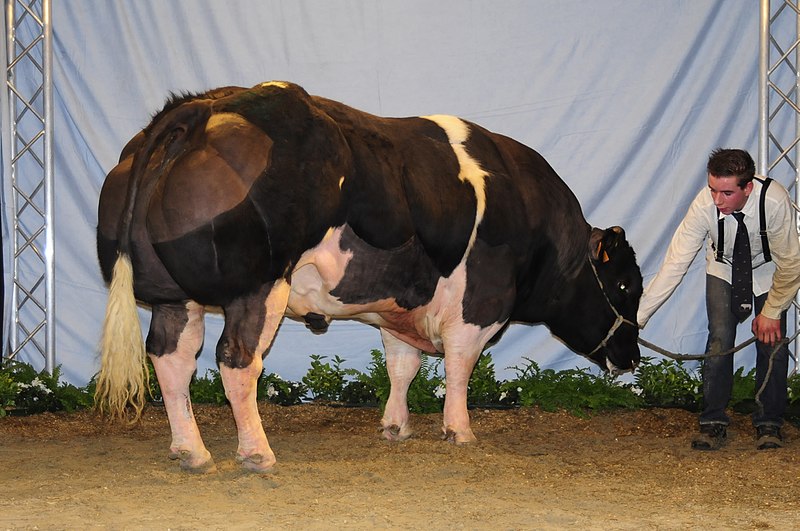 |
| Figure 1. Image of Belgian Blue bull from Flickr. |
Wikis are sites designated for the addition, adjustment, and removal of information via the internet; an example of a wiki is Wikipedia. Wikipedia is known as 'the online encyclopedia', which is a collaboration of information from people willing to share their knowledge pertaining to a particular topic. Nicole Briggs mentioned in her blog that Wikipedia can be used by professionals, such as researchers, to distribute knowledge and research findings to the public faster. However when people use Wikipedia they have to be conscious of the information they attain from these resources. In an article, Wikipedia Founder Discourages Academic Use of His Creation, Jimmy Wales, the founder of Wikipedia, says the site should not be used for “serious research”, because the site does not always contain irrefutable sources. Therefore, using Wikipedia as a source of information should be limited to just using it to attain a brief understanding of an issue or topic of interest. When using Wikipedia people should be aware that the information may not be reputable and possibly bias in certain situations. In addition, information is constantly being changed, so users should always check the facts.
The Wikipedia stub that I decided to work on was pertaining to a breed of beef cattle known as Belgian Blue. I first heard about this particular breed of cattle during a lecture by Dr. Thomas McFadden, the professor for Animal Sciences (AnSc) 311. In this lecture he discussed the physiological changes that can occur in animals when particular genes and proteins are modified. This particular breed of cattle is known for its signature double-muscled appearance, which has been attained by selective breeding. My particular interest in this topic is due to the implications this breed of cattle could have on future meat yields with pure-breeding and cross-breeding with the Belgian Blue.
My major in Animal Health is food animals, so I am particularly intrigued by livestock, especially cattle. Cattle breeds such as this could be a more efficient meat yielding breed of cattle, which could allow for an increase in meat production. However there could be a public stigmatism that these cattle are unnatural or genetically modified. Nevertheless, this is not the case, as the double-muscling characteristic is due to a natural genetic mutation. So in order for people to understand this, further research and dissemination of knowledge about this particular breed of cattle will have to occur. This would allow a greater understanding of this breed of cattle by the public. Wikipedia could be used in this situation to give the public a clearer understanding on how researchers and breeders are harnessing natural genetic mutations to create superior breeds. However people have to remember to check their facts because Wikipedia is only a starting point. Preview and review papers are a great location in which to look, after your interest in Belgian Blue cattle is captured.
If you would like to learn more about how this particular genetic mutation have come to define the Belgian Blue breed please read my Wikipedia stub.
 |
| Figure 2. Image of Belgian Blue Wikipedia stub from Flickr. |
References
Fig. 1. kamp-Bambino vd ijzer copy. (2007). Agriflanders, [digital image]. Retrieved March 21, 2012. From Flickr: http://www.flickr.com/photos/agriflanders/5366421733/in/photostream/
Fig. 2. ALES204-Wiki Image. (2012). Bbohlender, Becky Bohlender, [digital image]. Retrieved March 22, 2012. From Flickr:http://www.flickr.com/photos/75305779@N06/7007748879/in/photostream/